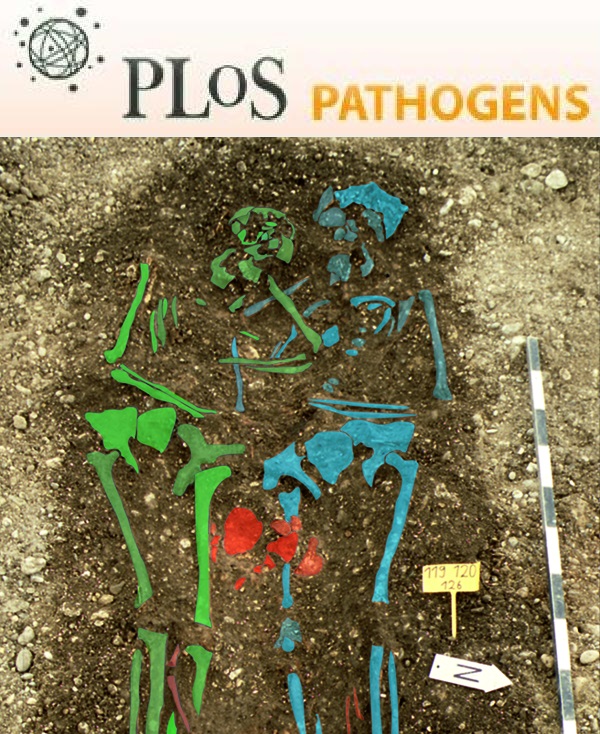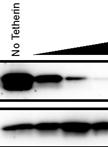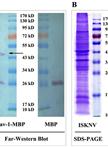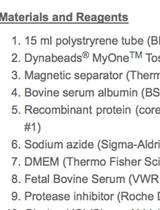- EN - English
- CN - 中文
Co-immunoprecipitation of Flag-TLR3 or Myc-MSR1 with HCV RNA
Flag-TLR3 或 Myc-MSR1 与 HCV RNA的免疫共沉淀
发布: 2014年03月05日第4卷第5期 DOI: 10.21769/BioProtoc.1061 浏览次数: 10493
评审: Fanglian He
Abstract
Co-immunoprecipitation assay of TLR3-Flag or Myc-MSR1 with HCV RNA is used to identify direct interaction of viral RNA with host proteins that recognize viral RNA to initiate interferon (IFN) signaling, a crucial antiviral response of the host cells. Both Toll-like receptor 3 (TLR3) and class-A scavenger receptor type 1 (MSR1) proteins recognize viral double-stranded RNA (dsRNA) which may be released into the extracellular milieu or spread from HCV-infected cells to uninfected neighbor cells via cell-to-cell contact, resulting in IFN-β activation that restricts viral propagation. We have found that MSR1 binds extracellular dsRNA, mediating its endocytosis and transport toward the endosome where it is engaged by TLR3, thereby triggering IFN responses in both infected and uninfected cells. We used this assay to demonstrate the pivotal role of MSR1 in mediating TLR3-recognition of the HCV RNA. The assay described in this protocol is based on the conventional protein immunoprecipitation protocol with conditioned buffers that prevent nonspecific RNA degradation by RNase present in the lysate. RNA molecules associated with the Flag-tagged protein were trapped by a specific antibody followed by Protein G capture, extracted and detected quantitatively by RT-PCR assay, followed by agarose-gel electrophoresis for visualization. This method can also be applied to detection of other protein-RNA interactions.
Keywords: PAMP receptor (PAMP受体)Materials and Reagents
- Huh-7.5 cells (obtained from Apath, LLC) expressing TLR3-Flag (or other cells stably/transiently expressing Flag/Myc-tagged protein)
- DMEM (Life Technologies, catalog number: 11995065 )
- 10% heat-inactivated FBS (Life Technologies, catalog number: 26140079 )
- Penicillin-streptomycin (Life Technologies, catalog number: 15140-148 )
- L-Glutamine (Life Technologies, catalog number: 25030-081 )
- Non-essential amino acids (Life Technologies, catalog number: 11140050 )
- HCV strain HJ3-5 stock prepared in cell culture medium (see Reference 2)
- DPBS (Life Technologies, catalog number: 14190-144 )
- RNase inhibitor (RNaseOUT) (Life Technologies, catalog number: 10777-019 )
- Protease inhibitor (Complete Protease Inhibitor Cocktail Tablets) (Roche Diagnostics, catalog number: 1697498 )
- Triton X-100 (Sigma-Aldrich, catalog number: T9284 )
- Anti-Flag (M2) and anti-Myc (9E10) monoclonal antibodies (Sigma-Aldrich, catalog numbers: F1804 and M4439 ) and mouse IgG control (Life Technologies, catalog number: 02-6502 )
- Protein G sepharose (General Electric Company , catalog number: 17-0618-01 )
- TRIzol (Life Technologies, catalog number: 15596-026 )
- Molecular biology grade water (Corning, catalog number: 46-000-CM )
- Agarose (GenePure LE Agarose) (BioExpress, GeneMate, catalog number: E-3120-500 )
- Protein Assay Dye Reagent Concentrate (Bio-Rad Laboratories, catalog number: 500-0006 )
- Platinum® Taq DNA Polymerase (Life Technologies)
- Culture medium (see Recipes)
- Lysis buffer (see Recipes)
Equipment
- 100 mm plates (FalconTM, catalog number: 353003 )
- Cell scraper (FalconTM, catalog number: 353085 )
- Electrophoresis Gel Box
- Tube Rotator (Fisher Scientific, catalog number: 05-450-200 )
- Centrifuge (Eppendorf, catalog number: 5415R )
- Superscript III One-step RT-PCR system (Life Technologies, catalog number: 12574-018 )
Procedure
文章信息
版权信息
© 2014 The Authors; exclusive licensee Bio-protocol LLC.
如何引用
Readers should cite both the Bio-protocol article and the original research article where this protocol was used:
- Yamane, D., Dansako, H. and Lemon, S. M. (2014). Co-immunoprecipitation of Flag-TLR3 or Myc-MSR1 with HCV RNA. Bio-protocol 4(5): e1061. DOI: 10.21769/BioProtoc.1061.
- Dansako, H., Yamane, D., Welsch, C., McGivern, D. R., Hu, F., Kato, N. and Lemon, S. M. (2013). Class A scavenger receptor 1 (MSR1) restricts hepatitis C virus replication by mediating toll-like receptor 3 recognition of viral RNAs produced in neighboring cells. PLoS Pathog 9(5): e1003345.
分类
微生物学 > 微生物生物化学 > 蛋白质 > 免疫检测
生物化学 > RNA > RNA-蛋白质相互作用
生物化学 > 蛋白质 > 免疫检测 > 免疫沉淀(IP)
您对这篇实验方法有问题吗?
在此处发布您的问题,我们将邀请本文作者来回答。同时,我们会将您的问题发布到Bio-protocol Exchange,以便寻求社区成员的帮助。
提问指南
+ 问题描述
写下详细的问题描述,包括所有有助于他人回答您问题的信息(例如实验过程、条件和相关图像等)。
Share
Bluesky
X
Copy link












